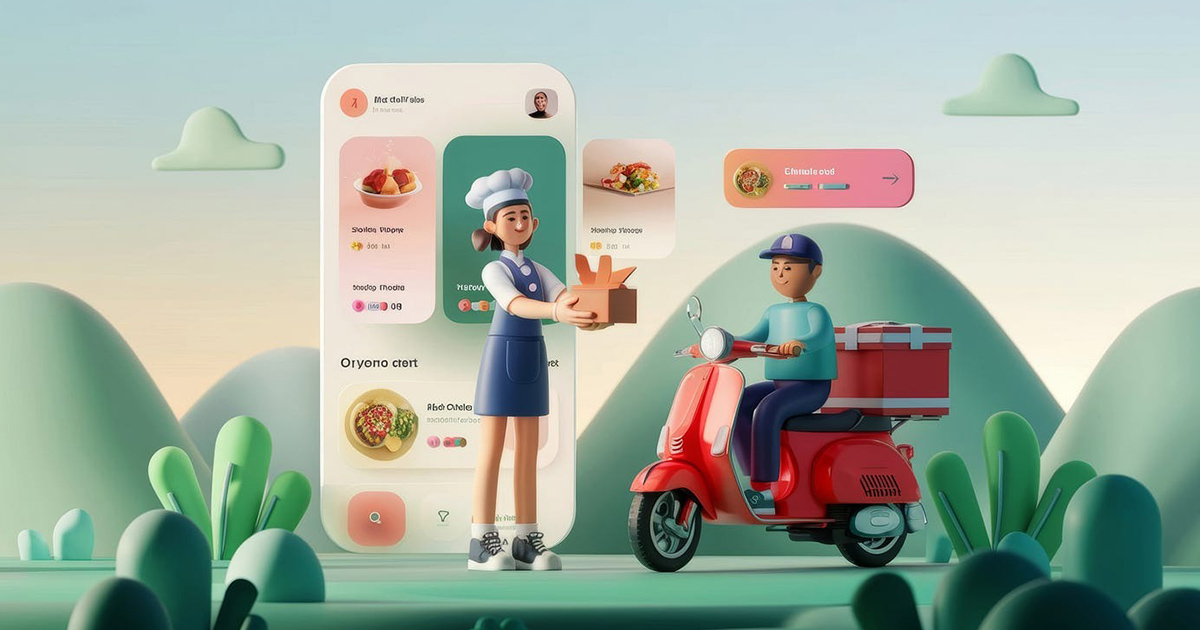
Admin / July 11, 2025

The culinary landscape is in constant flux, but few trends have been as transformative as the rise of the food delivery app. In 2025, the notion of online ordering is no longer a luxury—it’s a prerequisite for survival and growth. As the global online food delivery market continues its robust expansion, restaurants that fail to embrace a dedicated digital presence risk being left behind.
This isn't just about offering convenience; it's about reclaiming control, building lasting customer relationships, and maximising profitability in a highly competitive digital ecosystem. While third-party delivery services have played a vital role in expanding reach, the strategic imperative for restaurants in 2025 is to establish their own proprietary food delivery app.
The data is clear- the food delivery industry is experiencing unprecedented growth. By 2025, online food delivery is projected to be a multi-billion dollar market, driven by shifting consumer behaviors. Convenience is king. Busy lifestyles, increased smartphone penetration, and the expectation of instant gratification have cemented the food delivery app as an essential utility for modern diners.
Millennials and Gen Z, in particular, view ordering food online not as an occasional treat, but as an integral part of their daily routine. They expect seamless experiences, personalized recommendations, and real-time tracking—features that are standard on most delivery platforms.
However, the reliance on third-party aggregators, while offering access to a vast user base, presents significant challenges for restaurants, primarily centered on high commission fees and a loss of control over the customer relationship.
While platforms like DoorDash, Uber Eats, and Grubhub have undoubtedly provided visibility, they often come at a steep price. Restaurants frequently face commission fees ranging from 15% to as high as 35% on every order. These substantial cuts can severely erode profit margins, making it difficult to maintain financial health.
More critically, when a customer orders through a third-party food delivery app, the restaurant loses ownership of that customer data. The platform controls the communication, the user experience, and the valuable insights derived from ordering patterns. This makes it challenging for a restaurant to build loyalty programs, gather feedback, and engage in targeted marketing. The customer belongs to the platform, not the restaurant.
In 2025, restaurants are realizing that relying solely on these platforms is akin to renting out their customer base. To build a sustainable business, they must transition from being a vendor on a marketplace to the primary destination for their diners.
Developing a dedicated food delivery app allows a restaurant to bypass the costly middleman and directly connect with their customers. This strategic shift offers several key advantages that are crucial for success in 2025.
The most immediate benefit of a proprietary food delivery app is the significant boost to the bottom line. By eliminating third-party commissions, restaurants retain a much larger portion of the revenue from each order. While there are initial costs associated with developing and maintaining an app, the long-term financial benefits far outweigh the expense. The savings from commission fees can be reinvested into the business, used to offer competitive pricing, or fund better quality ingredients.
A restaurant's own food delivery app is a treasure trove of data. Unlike third-party platforms, which typically restrict access to customer information, a proprietary app allows restaurants to collect valuable insights into ordering history, preferences, and demographics.
This data is the foundation for personalized marketing and effective loyalty programs. Restaurants can send targeted promotions, offer exclusive deals, and implement reward systems that encourage repeat business. When a restaurant owns the customer data, they can transform one-time purchasers into loyal, returning patrons.
A proprietary food delivery app is a direct extension of a restaurant's brand. It provides complete control over the user interface, design, and overall customer experience. Restaurants can ensure the app reflects their unique personality and atmosphere, offering a seamless and intuitive ordering process.
Furthermore, a dedicated app eliminates the competition inherent in third-party marketplaces, where a restaurant's listing is just one among dozens. A customer on a proprietary app is focused solely on the restaurant's offerings, reinforcing brand loyalty and increasing the likelihood of an order.
In 2025, efficient operations are non-negotiable. A well-designed food delivery app can be seamlessly integrated with the restaurant’s existing Point-of-Sale (POS) system, reducing manual entry errors and streamlining the ordering process.
Integration minimizes the "tablet mayhem" that often plagues restaurants juggling multiple third-party platforms. Orders flow directly to the kitchen, improving speed and accuracy. This operational efficiency is vital, especially during peak hours, ensuring that food is prepared and delivered promptly, leading to higher customer satisfaction.
The food delivery landscape in 2025 is increasingly characterized by AI-powered personalization. While third-party apps utilize AI, a proprietary food delivery app allows a restaurant to leverage this technology to a far greater extent.
Restaurants can use AI to offer hyper-personalized recommendations based on a customer's past orders and preferences. This level of customization not only improves the user experience but also increases the average order value through effective upselling and cross-selling.
While the benefits of a proprietary food delivery app are significant, it's worth noting that many successful restaurants in 2025 employ a hybrid strategy. Third-party platforms can still be valuable tools for "discovery" and acquiring new customers, especially for emerging businesses.
The optimal approach is to maintain a presence on major platforms for visibility while actively encouraging customers to transition to the restaurant’s own app. This can be achieved through incentives, loyalty programs, and prominent branding within the third-party platforms themselves.
The transition to a digital-first world has made a dedicated food delivery app a non-negotiable asset for restaurants in 2025. It's more than just a convenient ordering tool; it's a strategic investment in profitability, customer relationships, and operational efficiency. By taking control of the online ordering experience, restaurants can thrive in the competitive delivery market, ensuring their brand remains vibrant and their business sustainable for years to come.